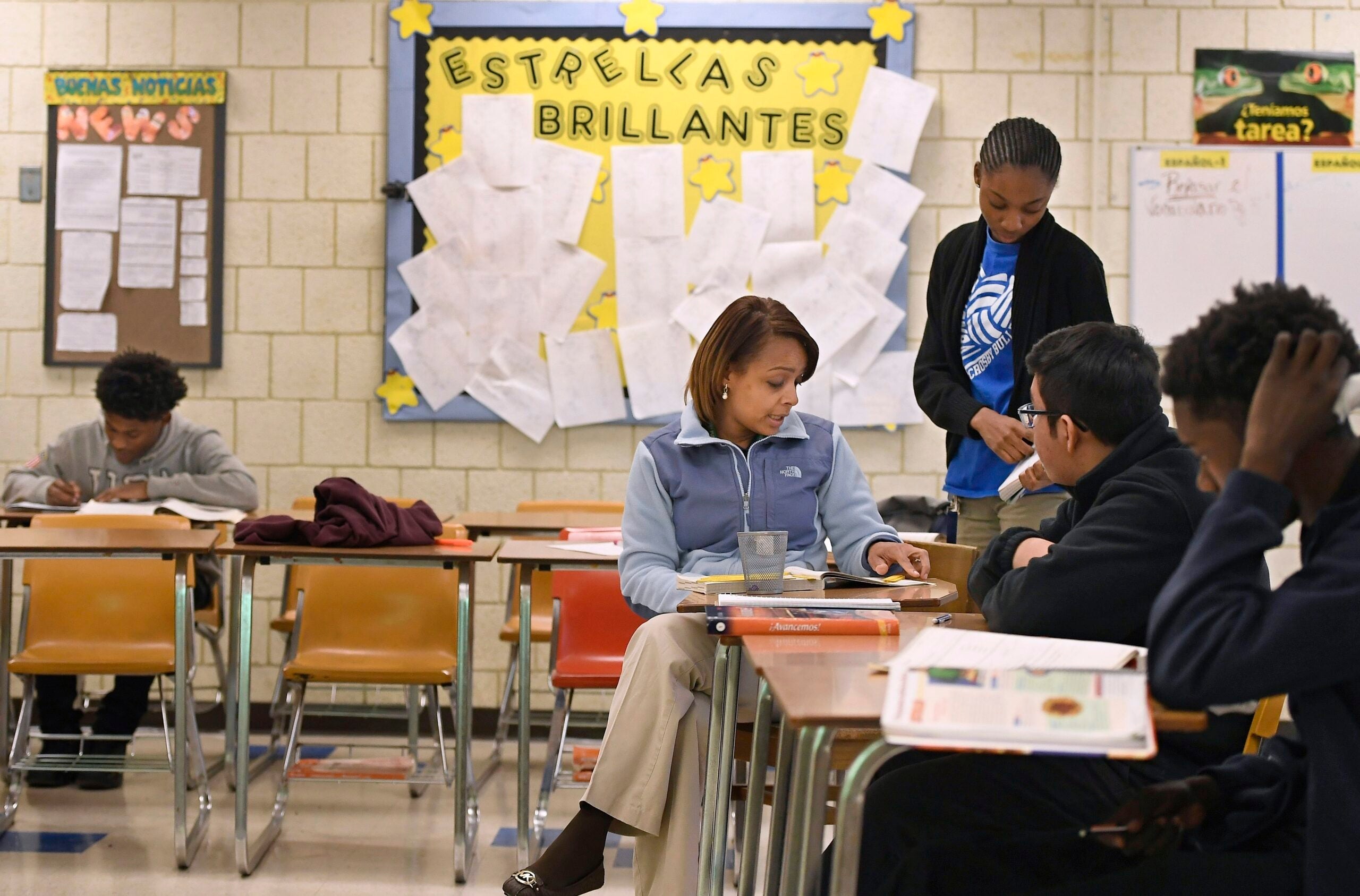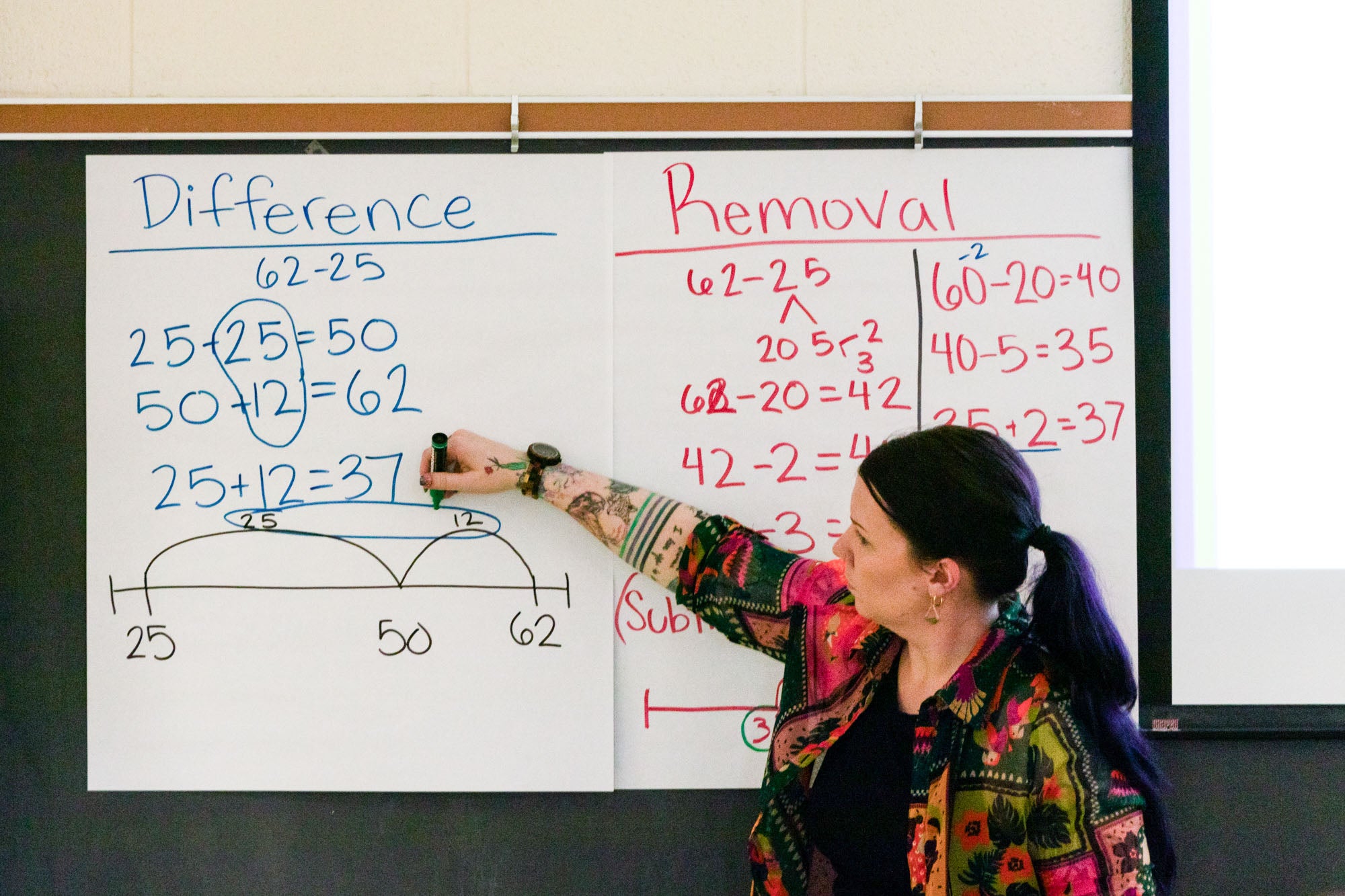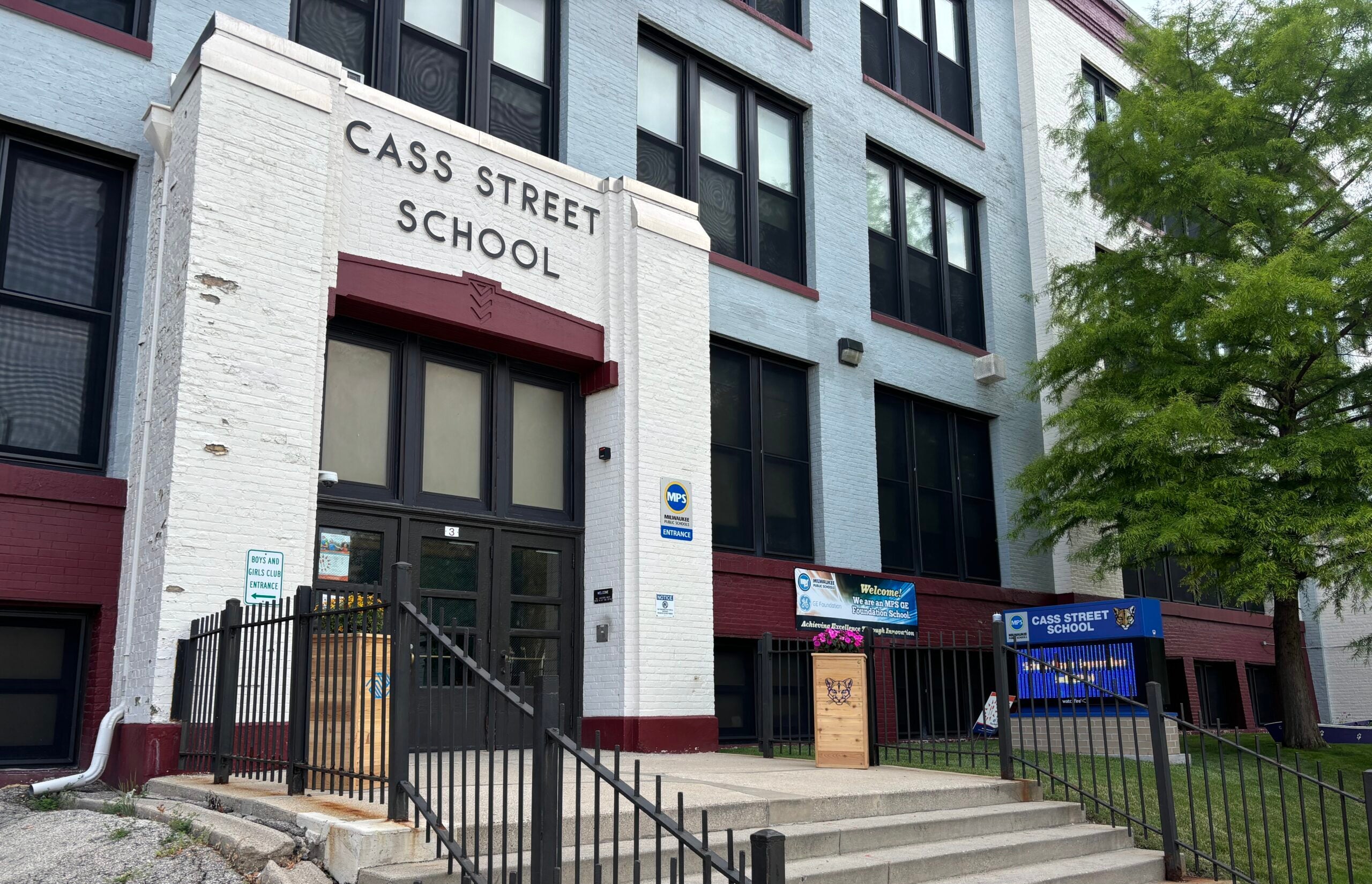Teacher turnover in Wisconsin is most prevalent in school districts serving vulnerable student populations and among teachers of color, according to a new report.
And the number of educators leaving the workforce is growing.
Turnover rose to nearly 16 percent in the 2022-23 school year, up from an average of 11.5 percent since 2009, according to the Wisconsin Policy Forum, which looked at the reasons nearly 116,000 teachers at roughly 450 school districts and other K-12 entities left their jobs over the last 15 years.
News with a little more humanity
WPR’s “Wisconsin Today” newsletter keeps you connected to the state you love without feeling overwhelmed. No paywall. No agenda. No corporate filter.
The 2023 rate included both the highest levels on record of teachers moving between districts and the second-highest levels of teachers leaving Wisconsin public school classrooms.
High levels of teacher turnover can affect how a school district operates, and research suggests it can affect outcomes from students.
“This effect is especially concerning given our findings that turnover is highest in precisely those schools where students face the biggest challenges and might benefit the most from a stable environment in which to learn,” the report found. “As students recover from the worst of pandemic disruption, that stability may be even more important.”
The report also found turnover among white teachers, who make up the great majority of the state’s educator workforce, was slightly below the overall state average during the period studied.
But turnover among teachers of color was substantially higher. The turnover rate for Black teachers was 23.4 percent in 2023.
“No other racial or ethnic group saw such high turnover rates for so many years,” the report found. “The high turnover rates reflect, at least in part, the fact that the state’s Black teachers tend to be concentrated in districts with high turnover rates for teachers of all races and ethnicities.”
The report found all school districts in the state are struggling and experienced at least 10 percent turnover on average during the years studied.
While this indicates the widespread nature of the issue, districts with a larger percentage of students of color and higher levels of economic disadvantage have seen a greater percentage of teacher loss, according to the report.
Heather Peske, president of the National Council on Teacher Quality, said because of that turnover, students of color and students from families who are struggling financially are often assigned to the least experienced teachers.
Peske, who did not participate in the Wisconsin Policy Forum Report, said less qualified and less effective teachers often are in classrooms where students need the most help.
“We have this persistent pattern in this country of sending the least experienced teachers to teach in our schools with the highest percentage of students living in poverty and the highest percentage of students with disabilities,” Peske said. “It just perpetuates students paying the price for unqualified, inexperienced and underprepared teachers.”
The policy forum report looked specifically at Milwaukee Public Schools, the state’s largest school district, where the average teacher turnover rate was 15.4 percent.
MPS teachers have a lot to contend with – some of the most impoverished neighborhoods in the state, poverty and trauma in their classrooms, high vacancy rates and buildings with years of deferred maintenance due to ongoing budget restraints.
In many districts, the policy forum found teachers are retiring, moving to another state to teach, switching to a public school job other than teaching, or leaving the education field or public schools entirely.” It is possible that MPS teachers are at particular risk of leaving the classroom or state altogether because of challenging working conditions,” the report found.
“Inexperienced teachers may feel unsupported in facing these and other challenges, while more experienced teachers may not see opportunities to grow without leaving the classroom,” the report found.
Milwaukee Public Schools has had as many as 230 teacher vacancies.
Ingrid Walker-Henry, vice president of the Milwaukee Teachers’ Education Association, said she doesn’t know what the current vacancy rate is, but the district has done everything it can to fill them.
Walker-Henry said she’s excited about some of the recent steps that have been taken, including hiring teachers from abroad. Last year about 60 international teachers were hired. This year, MPS plans to bring on another 140 from other countries including Nigeria, Mexico and the Philippines.
“We are living in a time in our country and our state that we are having to hire educators outside of traditional pipelines due to a purposeful underfunding and due to a lack of deprofessionalization in education,” Walker-Henry said. “We want to look at what’s best for our children. We want educators in front of our children, and we want to be respected as educators.”
Wisconsin Public Radio, © Copyright 2025, Board of Regents of the University of Wisconsin System and Wisconsin Educational Communications Board.







